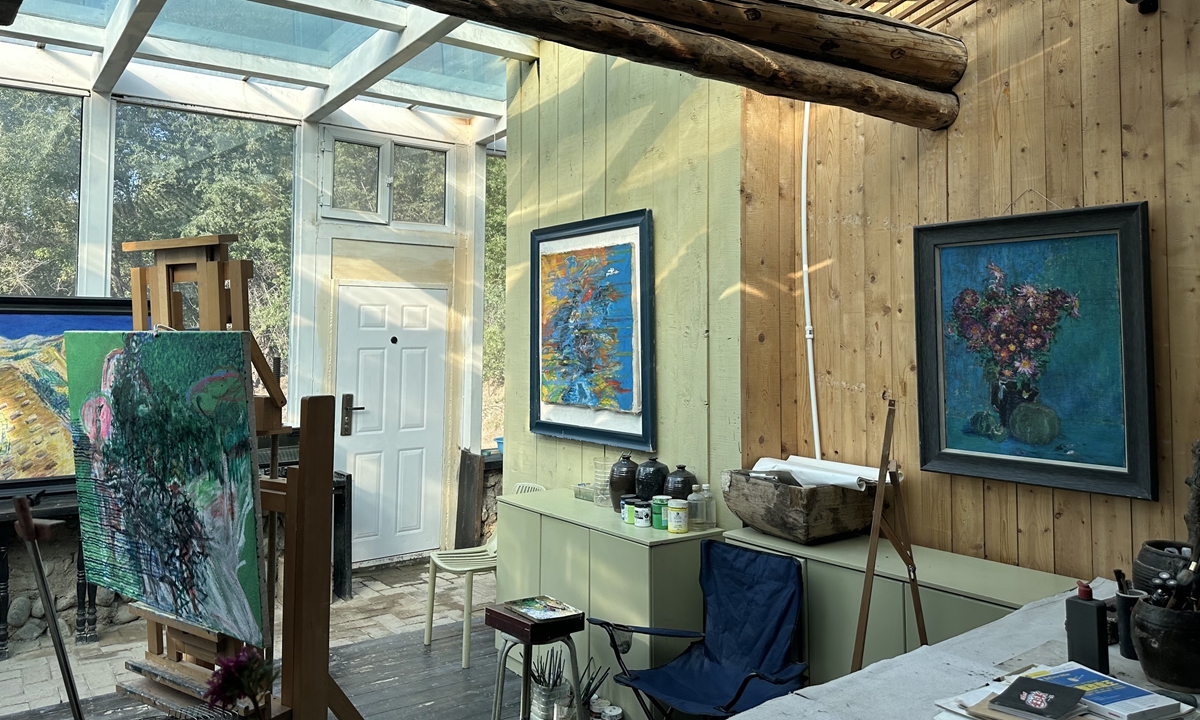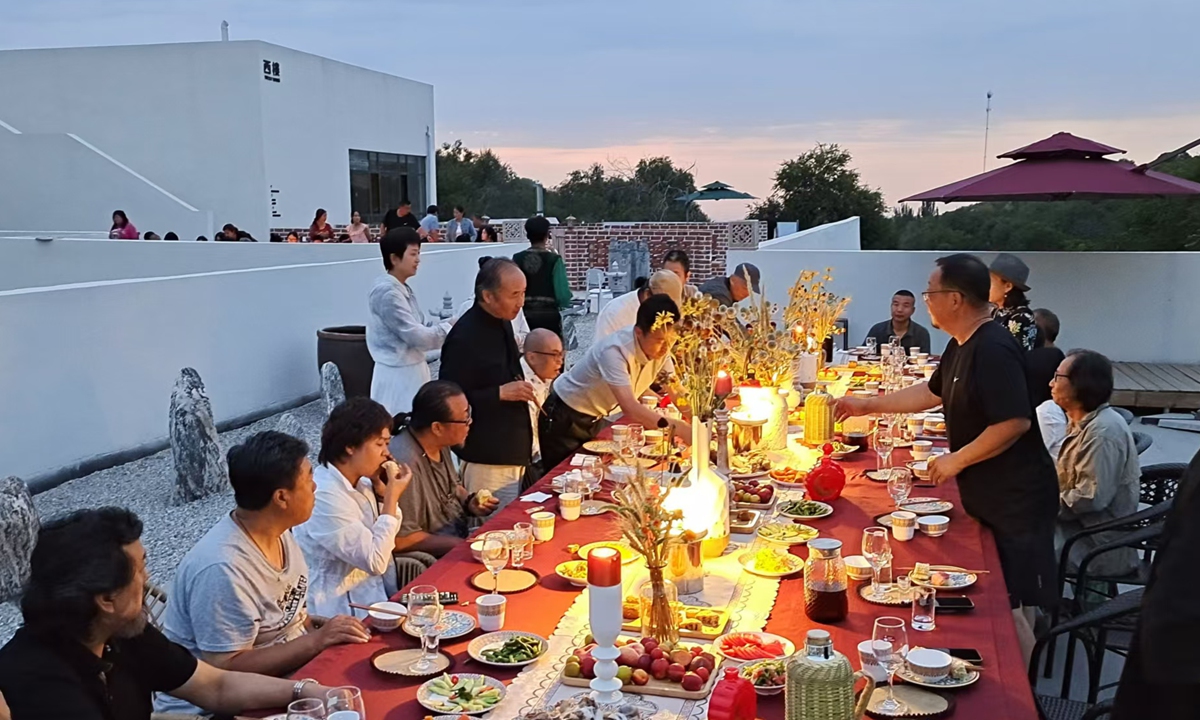
Caizigou village in Kazak Autonomous County of Mori, Northwest China's Xinjiang Uygur Autonomous Region Photo: VCG
At an ongoing photo exhibition organized by Wang Guizhong, visitors linger in front of a photo of a man driving a tractor through a golden wheat field, captivated by the idyllic scenery portrayed by the artwork. Outside the exhibition hall, the landscape captured in the picture unfolds - Caizigou village, Kazak Autonomous County of Mori, Northwest China's Xinjiang Uygur Autonomous Region.
"When I first arrived at the village, I was struck by the harmonious blend of its natural scenery and the tranquil lifestyle that combines farming and herding. At that time, several artists from across the country had settled here, creating a unique artistic atmosphere," Wang told the Global Times. Since then, the photographer decided to stay and established a photography studio for fellow art enthusiasts seeking inspiration and materials in the village.
With a group of more than 20 cultural creators like Wang who work in diverse fields such as painting, writing, and photography, the fading village at foot the of the Tianshan Mountains welcomed back its local young people and also attracted an increasing number of visitors after being dubbed the "artists' village."
Standing as a vibrant example of how art and rural life can intertwine to create new opportunities for both creators and rural areas, Caizigou village has been influencing surrounding rural areas, which began to be embraced by artistic creatives for their uniqueness, Xiang Jun, founder of Yuandian Gallery who settled in the village a decade ago, told the Global Times.
There are more villages regaining their colors and spotlight with help from artists around the country.
A studio in Caizigou village Photo: Courtesy of the publicity department of the Kazak Autonomous County of Mori
Hometown of art
The transformation of Caizigou village started with a simple yet profound attraction: Its pristine natural beauty and the warmth of its people.
When the first batch of artists, including renowned Chinese writer Liu Liangcheng, arrived at the village in 2013, almost half of its residents had left but the original features of the ancient village, embodied by traditional dwellings scattered across the hillsides and along the gullies, continued to captivate those accustomed to urban life.
Xiang said that they wanted to distance themselves from the urban environment and experience the sounds of the wind and rain, the chirping of insects, and the singing of birds. They were also longing to watch the clouds drift over the Tianshan Mountains and witness the blooming and wilting of flowers. Caizigou village is a place that offers all of these experiences, retaining its natural beauty, whether in its untouched landscapes or the nostalgic old houses that tell stories of the past.
Tao Ruoxin was among the first to settle in the village and built a hotel to help accommodate more artists and visitors. While running the hotel, she has met a number of artists whose personal experiences with the ancient village have breathed life into their creations.
"I will never forget a middle-aged photographer who stayed at my hotel. He would leave early in the morning and return late at night almost every day. On one occasion, I joined him as he climbed the hillside to capture the stunning scenery. Suddenly I noticed tears streaming down the cheeks of this usually silent man, deeply moved by the beauty before him," Tao recounted.
Artists celebrate their 10th anniversary of settling in Caizigou village. Photo: Courtesy of Xiang Jun
Engine of changes
Nourished by the scenery and simple interaction with villagers, these artists have painted colorful hillsides and golden wheat waves, depicted rural daily life in literary works, and also captured scenes of harvest with cameras.
These artworks have drawn a growing number of tourists to the village after being disseminated through various channels. The exhibitions, workshops, and cultural events hosted by the artists offer an immersive experience, allowing visitors to connect with the village on a deeper level.
Tao noted that over the decade, she has also observed more young local people returning to the village following the development of tourism, building and running hotels as an investment into their hometown's bright future.
"Actually, the villagers have developed a deeper appreciation for art when they find themselves in an artistic environment. They are rediscovering the beauty of their ancestral village, with new life reflected in the way they decorate their homes," Xiang said. He believes that this kind of spiritual awakening is also essential for the development of rural areas.
Through wandering around rural areas around the country, Tao and Wang have noticed that villages throughout China are finding innovative ways to combine culture with development. By preserving traditions while introducing new forms of expression, artists are helping rural communities navigate the delicate balance between honoring the past and embracing the future.
For instance, the Luyao Literary Village in Qingjian, Northwest China's Shaanxi Province, which opened on December 1, 2024, focuses on the history of contemporary Chinese literature, encouraging tourists to experience what is described in the works of 100 renowned contemporary Chinese writers.
Despite the growing popularity of Caizigou village, Wang grows increasingly concerned about a potential problem - how to manage this newfound attention without compromising the peaceful life of the village so vastly different from the urban environment.
"Some efforts should be made to balance development with preservation. Measures such as limiting tourist numbers, protecting the natural environment, and maintaining the village's original culture and traditions can be taken into consideration," said Wang.